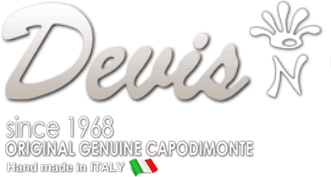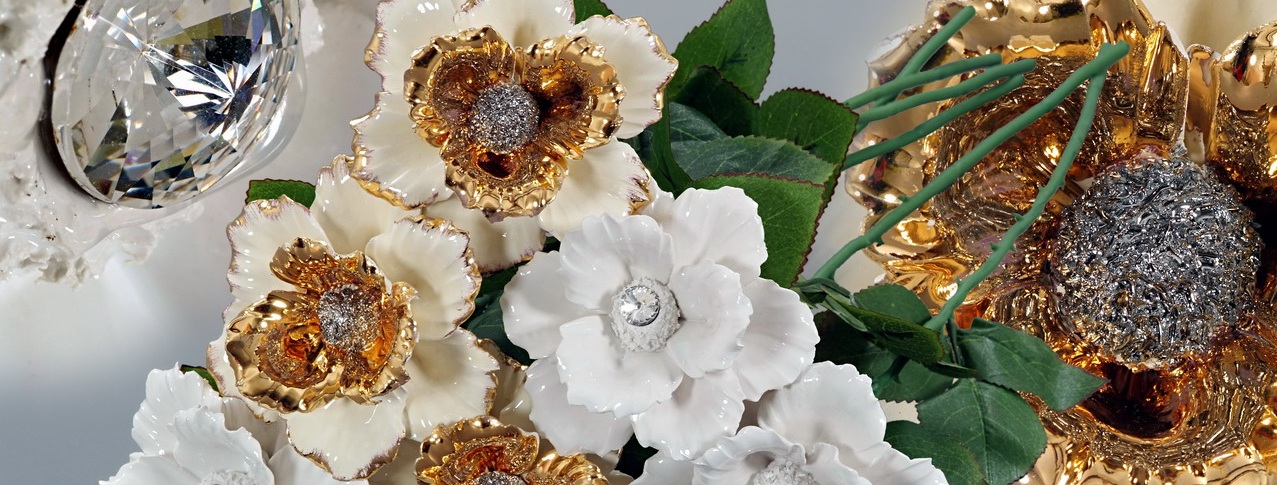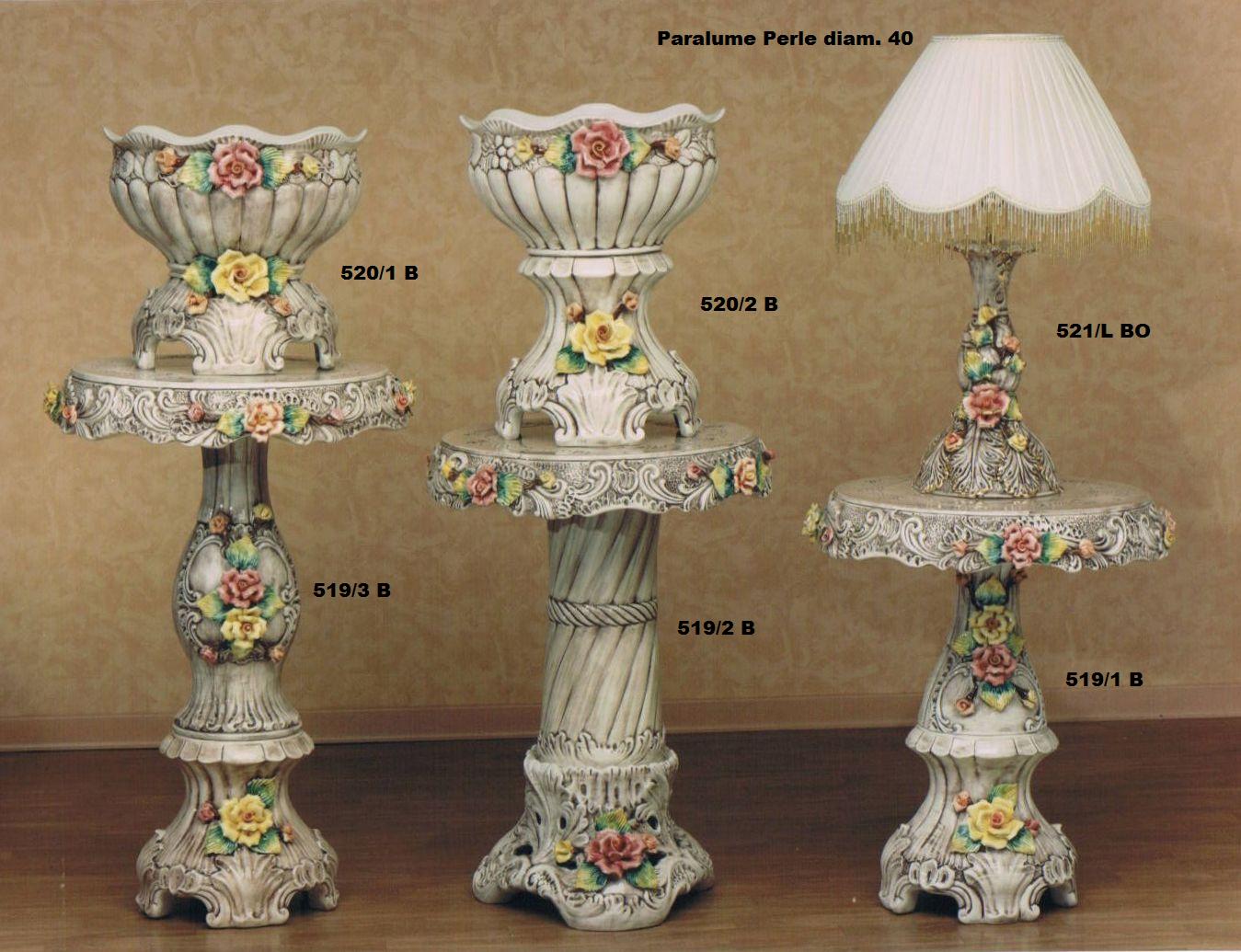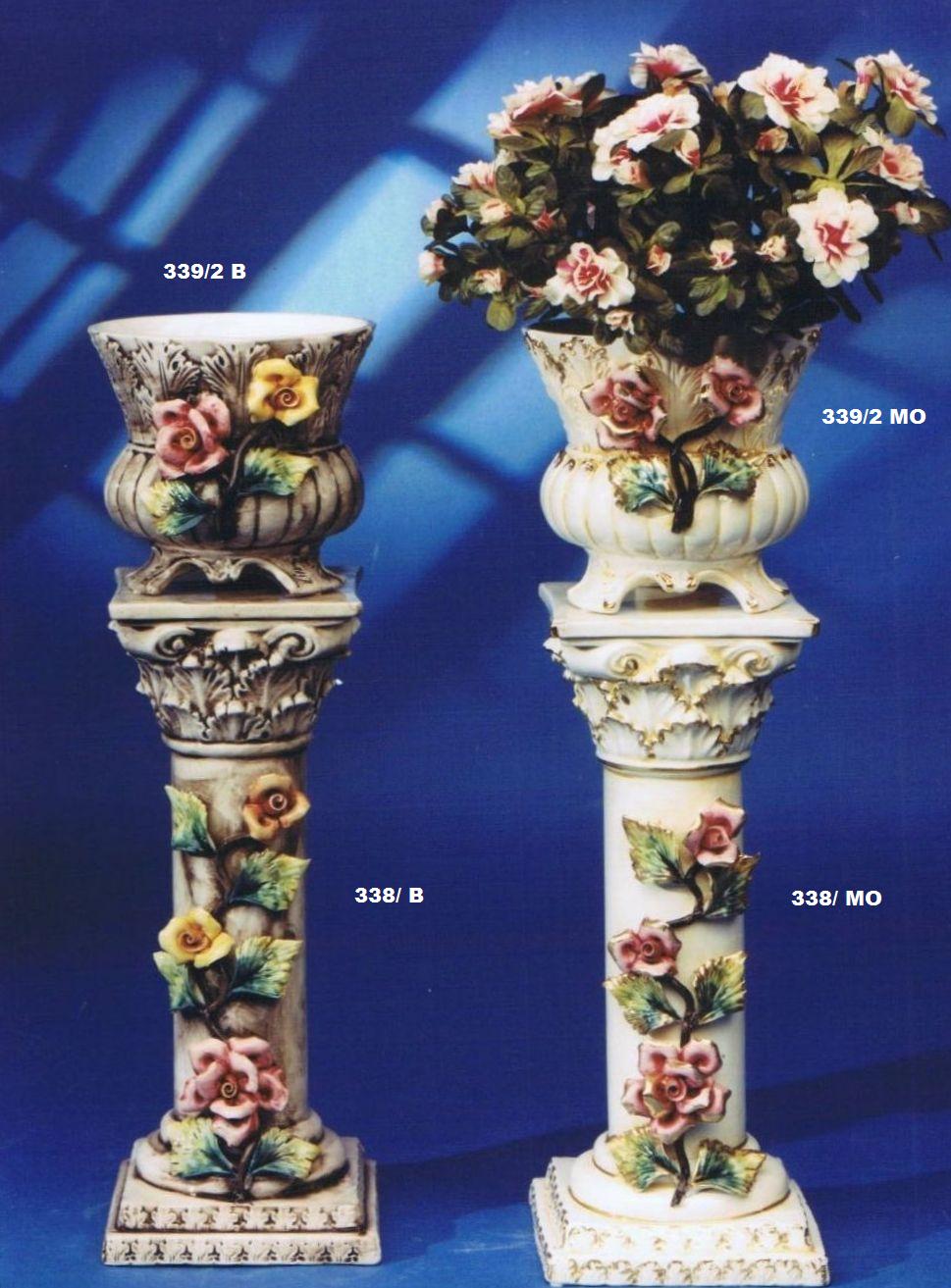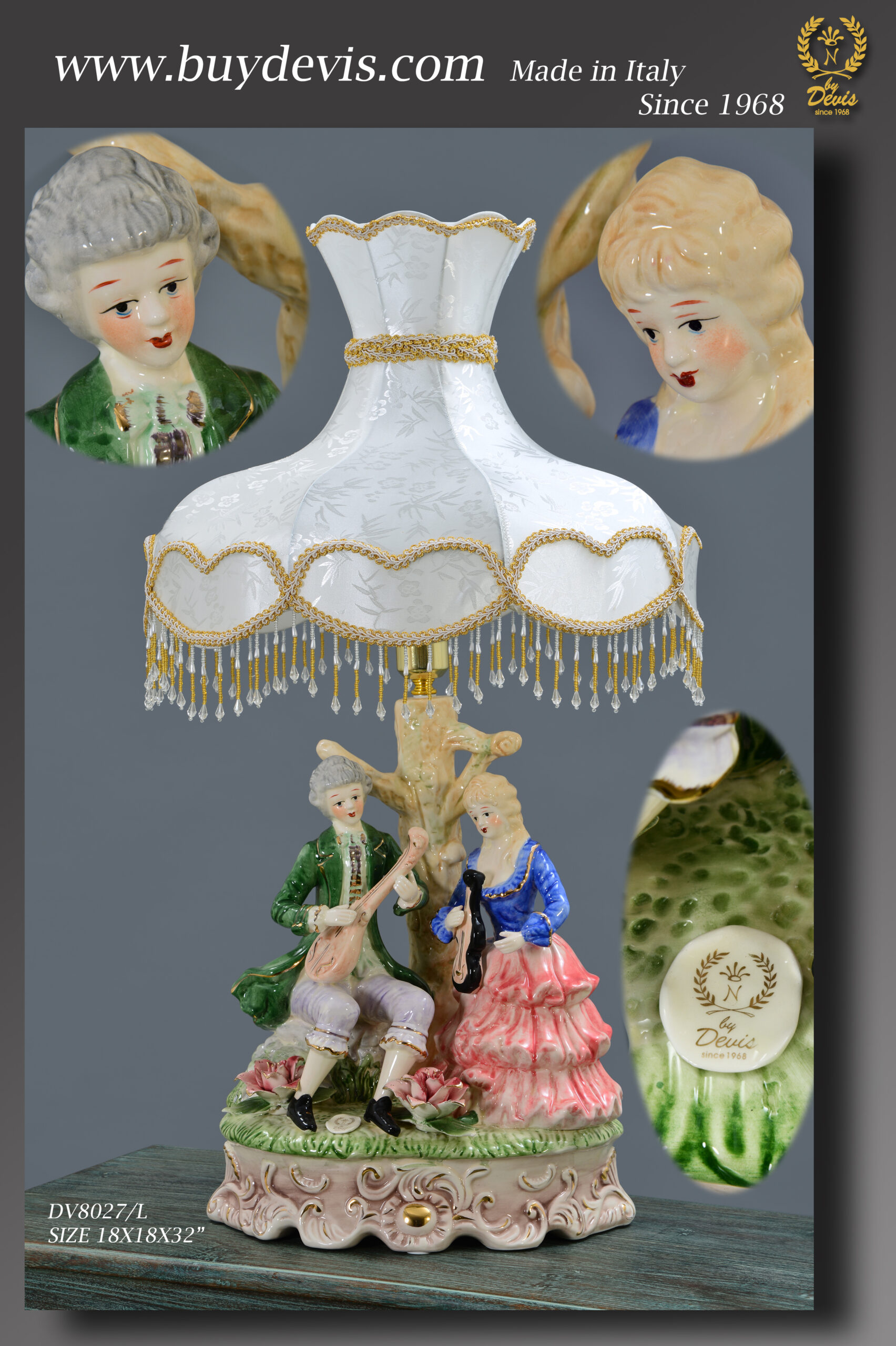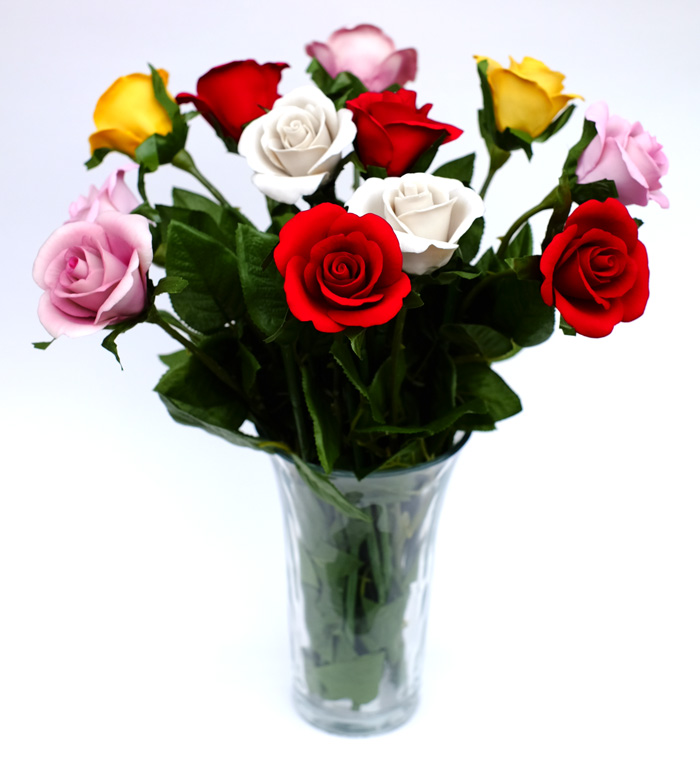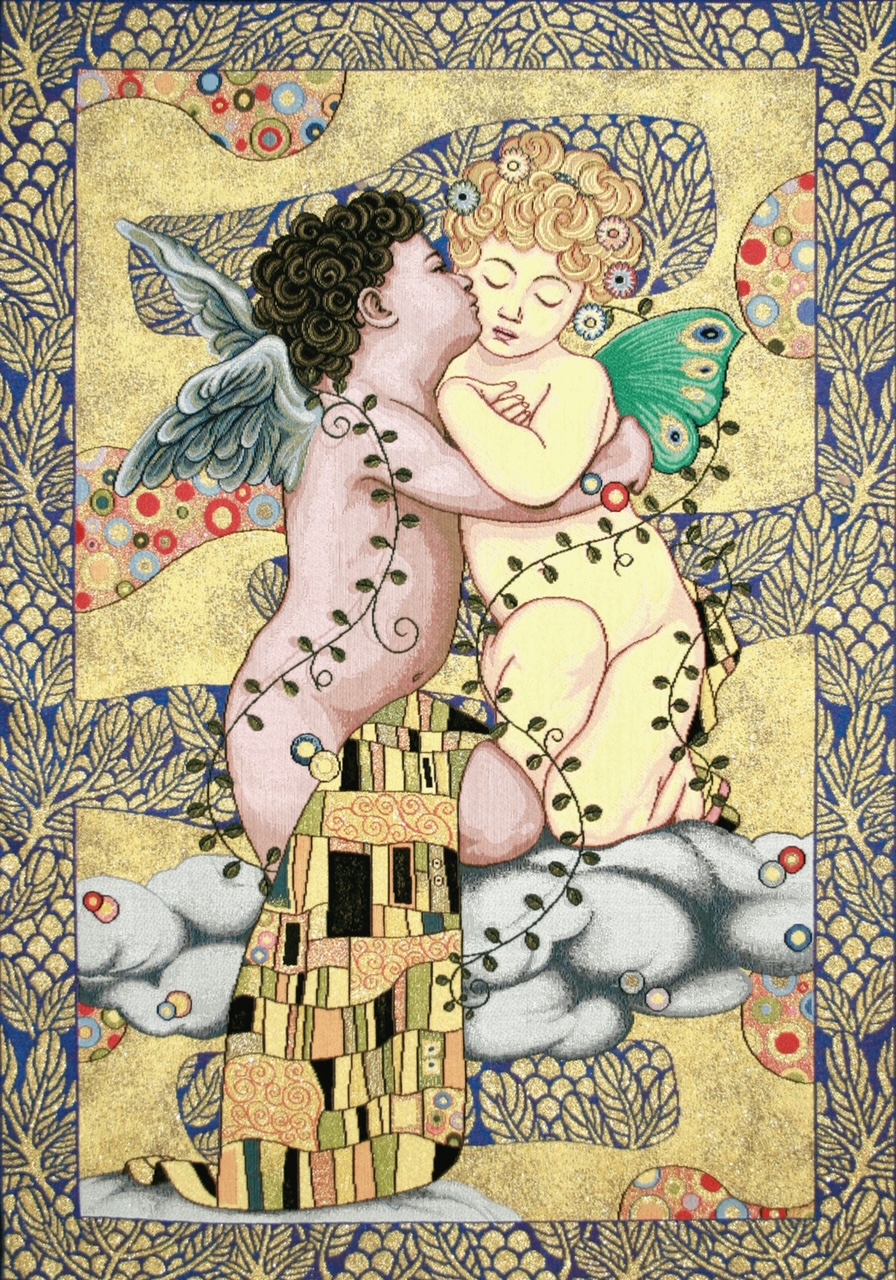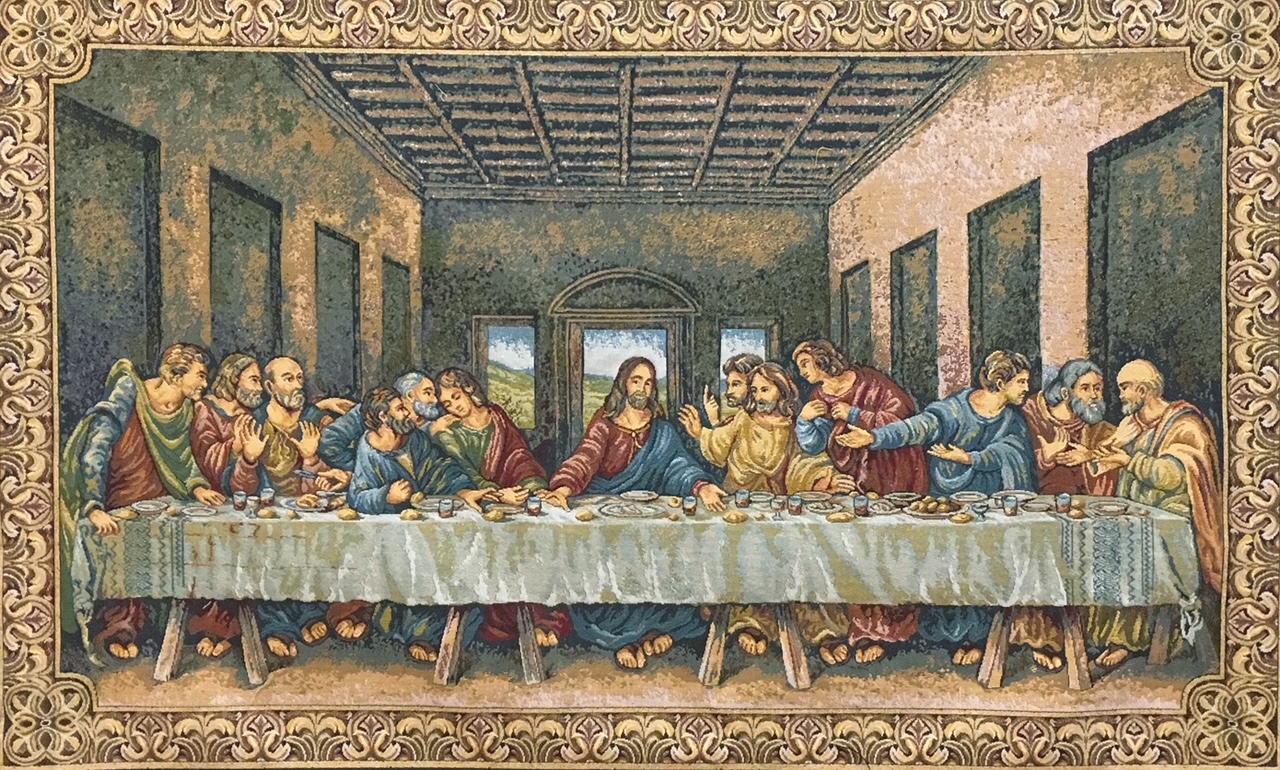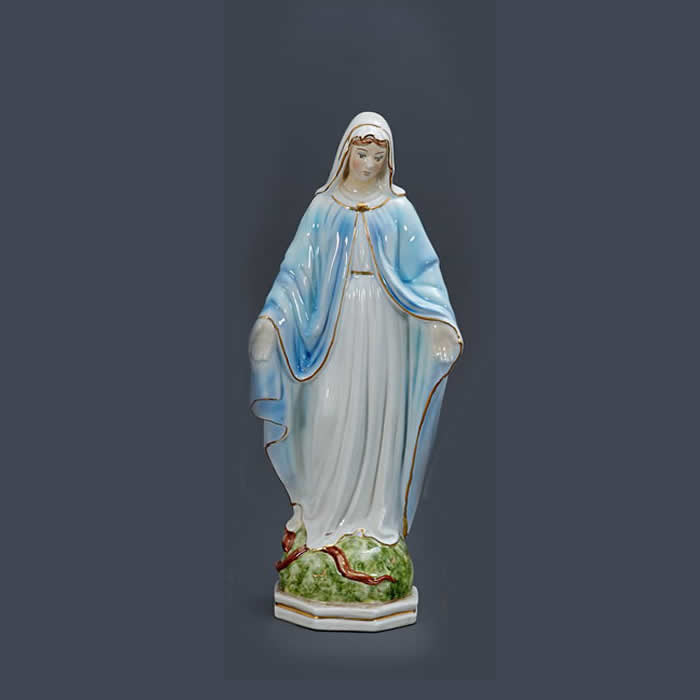Devis Capodimonte is a manufacturing company of Artistic Porcelain and Ceramic, encloses and expresses a precious tradition from the Capodimonte Art Masters in a new very much refined and elegant image of CAPODIMONTE, that has been passed on by this time since three generations. At the same time it has formed a new image of the Capodimonte culture turned towards the study, the projection, the research of models, designs, original and unedited styles of the 17th century evaluated and proposed in a modern light. It is actually that expression of refined and elegant Capodimonte, indicating the trends of an historical origin, that represent the essence and the spirit of the italians artists that become accurately re-discovered by whom has intended to propose for the first time, products to be the emblem of the Art of Capodimonte in a new acception of the modern culture valuas. Devis Capodimonte LLC is a branch in Usa of the famous Ceramiche Devis snc in Italy. The innovative element that principally distinguishes the research and creative activity of “Devis Capodimonte LLC ” is represented by the capacity oh having recollected objects and models that the Capodimonte factories had never produced before, giving way to a line which is the most significant and valuable artistic expression of the Capodimonte tradition and culture firstly and then as part of the Italian one. We are the the only branch of the largest Capodimonte Factory in Italy Ceramiche Devis snc of 100% made in Italy Capodimonte. We guarantee the lowest prices possible and the best quality. All our items are guaranteed to be authentic Capodimonte and they all made by Devis Capodimonte . We do not sell Reproductions or China made items.
Ceramics
Ceramics arts concern the creation of products made of earth, hand moulded o mechanically moulded and fired. The words derives from the Greek name of clay and it is used in modern languages with the meaning of the word fictilis in Latin, indicating any object made of clay. According to this original meaning, maintained in many modern languages, ceramics include crockery, statues and statuettes and building elements. These objects differ in their technical features:
a) depending on the nature of the earth and of the ingredients that are sometimes added to make the body, as each variety requires a specific temperature;
b) depending on their coating, on the decorative elements and on the type of decoration. An essential raw material is a body with enough cohesion and plasticity, obtained by the mixture of an adequate amount of water with clay (see), at its natural state or mixed with other substances.
The body
The first greenware, already relatively hardened and then expressly dried, must be exposed to fire, to shrink the earthy body (paste), to harden it and permanently fix it, and according to its chemical composition, it more or less strongly transforms it and changes its colour. Unlike what happens with glass production, a similar art, it does not melt it (as it would deform the product) but, for some kinds of ceramics it leads to a beginning of vitrification. After firing, the body can be considered either according to the different degree of compactness or according to the colour it has taken on. These different results can already be useful for an initial classification of ceramics pastes, because each class of products has its own fundamental characteristics. There are porous or compact paste ceramics and coloured or white paste ceramics. But the final classification must take into account another element that is usually constitutive of a given kind of ceramics: coating.
Terracotta
The simplest expression of ceramics are the objects made only of the body: terracotta, that is also the name given to the first big class of a rational division of production, therefore to all the manufactured products of a clay that is porous and coloured when fired and that does not have any coating (from bricks to ordinary garden vases, from statuettes to decorative terracotta). But use requirements and aesthetic feelings suggested since the most ancient times (see further) the adoption of a process to adjust the porosity and change the colour of the paste. This process involves the application of a more or less thick wrapping, either transparent or opaque, that makes soft pastes not waterproof, that polishes the hard ones, and covers with its colour the body of the clays that do not stay white after firing.
Coating
Apart from the alcaline coating used by ceramists in the past and the earthy slip, made of a white earth cover (that we call Siena or Vicenza earth), to be applied on greenware and requiring another waterproof wrapping (called “bianchetto” at the time, a term still used in many Italian workshops and used in particular for ceramics to be decorated with graffiti), there are two main types of coatings: paint and glazes. The first are transparent and the lead based one( lead-bearing paint) is also called glaze (vetrina) or crystal and is typical of soft pastes, because it melts at relatively low temperatures: The boraciferous and felspathic ones are called coverings and they are more typical of china, because they melt at higher temperatures. The most common and well-known glaze is the white and shiny one, opacified by stannous oxide, the traditional coating of majolica. Both types can be painted with vitrifiable colours, made of metal oxides that, together with the necessary fluxes, behave differently and lead to different results according to the temperature and to the atmosphere of the kiln (oxidising or reducing atmosphere).
Painting
Painting or colour décor is, in most cases, made of vitrifiable colours produced by these oxides. According to the temperature they must be submitted to, the colours can be called low flame or muffle flame ( to be applied only on coating about 600°) and high fire ( to be applied under the coating and inside it, from 900° to 970° and above). The names of coatings vary not only from language to language, but also in Italian. The vitreous one are usually called in fr. Glacure; sp. Vidriado; germ. Glasur; eng. Glaze, words that do not match the term invetriatura, that should only refer to coloured glaze coatings (like the della Robbia: so terrecotte invetriate- glazed terracotta). The earthy coating ( that needs another metal wrapping to make the object waterproof), that we call “ingobbio” – “bianchetto”, “mezzamaiolica” (this words actually refers to stage in-between the two techniques, the addition of a small amount of stannuous oxide, to make the slip richer) is called in Fr. Engobe, in Span. Englaba, in Germ.Halbamiolika, in Eng. Slip. If a coating is applied to traditional terracotta (called in this case biscotto), the second big class of ceramics is produces, the Faience, the most common of which is majolica. The other types are related to the different kinds of coatings (earthy or metallic, opaque or transparent).
Special Clays
The use of appropriate clays and of special ingredients allows us to produce other big ceramics classes, such as gres (see); Fr. Grès; sp gres,Ger. Steinzeus, Eng stoneware), that has a compact, usually coloured paste (it can also be white, and then the opaqueness distinguishes it from porcelain, that is translucent), it is fired at high temperatures and can either be coated or not; terraglia (see Fr, Faience fine, terra de pipe, cailloutage; Sp. Loza fine, loza inglesa; ger. Steingut; Engl. Earthenware) that has a white paste when fired and has different stages of compactness, therefore requiring either a lead-bearing paint or a covering according to the temperature; porcellana (see) Fr. Porcelain, Sp. Porcelana; Germ. Porzellan; Eng. Porcelain, china), that is fired at high temperature, has a white, compact paste and needs a covering. When it is produced without a coating (especially in small art objects) and imitates the marble grain it is called, like in French, biscuit (Sp. Bizcocho). All the kitchen and table pottery are called with the collective name stoviglie, a word that indictaes the use, rather than the material (cf. Latin testum, Fr. Poterie; Sp. Vajilla; Eng pottery; Ger.Topferei).
Classification
In all cases to fix the coating and the décor it is necessary to carry out one or two firings after the one necessary to make the biscotto, and only then the product can be considered a finished product. Therefore, there are two essential processes for the production of ceramics: the manipulation of materials and firing: during this last stage, changes in the physical state and the progressive and continuous chemical reactions that fix the kind of ceramics that one wants to produce take place (see what written about the ceramics industry and manufacture). The attempts made to classify ceramics products have been very laborious, but the terminology is still dubious, the single nomenclatures are still debated and the words in different languages do not exactly correspond. The following concise chart shows the most common cases. It has long been adopted by the Museum and by the School of Ceramics in Faenza and without claiming to answer everyone’s needs, it takes into account the two main aspects: the historical and the technical one.
Nove A ceramics area famous in the world since the eighteenth century.
 Many different factors have favoured the establishment and the development of ceramics arts in Nove since the eighteenth century. Among these, the presence underground of plastic clay and china clay and the possibility of using the Brenta river both to transfer finished products and wood for kilns and to set in motion, with its hydraulic power, the mills used to mix the bodies and mill the stones found in that same river.
Many different factors have favoured the establishment and the development of ceramics arts in Nove since the eighteenth century. Among these, the presence underground of plastic clay and china clay and the possibility of using the Brenta river both to transfer finished products and wood for kilns and to set in motion, with its hydraulic power, the mills used to mix the bodies and mill the stones found in that same river.
In the eighteenth century the growing demand and diffusion in Europe of the precious Chinese porcelain led Dutch ceramists to imitate their manufacturing style, and their products invaded even the markets of Venice. The venetian senate tried to solve this situation by encouraging domestic production granting tax rebates for those who produced porcelain and managed to improve majolica. That was a favourable moment for Giovanni Battista Antonibon who opened in 1727 in the old house of his father in Nove what would become the most important ceramics factory of the Venetian Republic.
In 1732 the Manifattura Antonibon was offered by The Senate the privilege of being exempt from all taxes for twenty years. Pasquale Antonibon, who succeeded his father in the business in 1738, accomplished another important goal in 1762: porcelain production. In that same years (1770) earthenware became widespread in Italy. Earthenware is a type of body that was produced in England already in 1725. This product, thanks to its whiteness and low cost had become an unexpected competitor of Italian majolica and porcelain. Once again the Manifattura Antonibon, led by Giò Maria Baccin, managed in 1768 to obtain a body that was an almost perfect imitation of the English one.
Three centuries of history and arts in the land of ceramics.
In the eighteenth century the growing demand and diffusion in Europe of the precious Chinese porcelain led Dutch ceramists to imitate their manufacturing style and their products invaded even the markets of Venice. The Venetian Senate tried to solve this situation by encouraging domestic production with tax rebates for those who produced porcelain and managed to improve majolica. That was a favourable moment for Giovanni Battista Antonibon who opened in 1727 in the old house of his father in Nove what would become the most important ceramics factory of the Venetian republic. Pasquale Antonibon, who succeeded to his father in the business, accomplished anther important goal in 1762: porcelain production. In 1770 earthenware became widespread in Italy. Earthenware is a type of body that, thanks to its whiteness and low cost had become an unexpected competitor of Italian majolica and porcelain. Once again the Antonibon factory, with Giò Maria Baccin, managed in 1786 to obtain a body that was an almost perfect imitation of the English one.
At the beginning of the nineteenth century, despite the serious political and economical crisis, some manufacturing companies from Nove managed to prosper thanks to earthenware. They gave up the luxury production for the now impoverished aristocrats and addressed the large public, and less wealthy people. New subject and techniques were developed for this new customers: this is how popular ceramics was born.
Towards 1860-1865 another genre was introduced, called the Artistic or courtly or the new rococo. This genre was perhaps devised for the need to compete with foreign countries at International Exhibitions. In the first years of 1900 the Nove Arts Institute marked the end of the nineteenth century’s heritage and the introduction of the twentieth century style.
